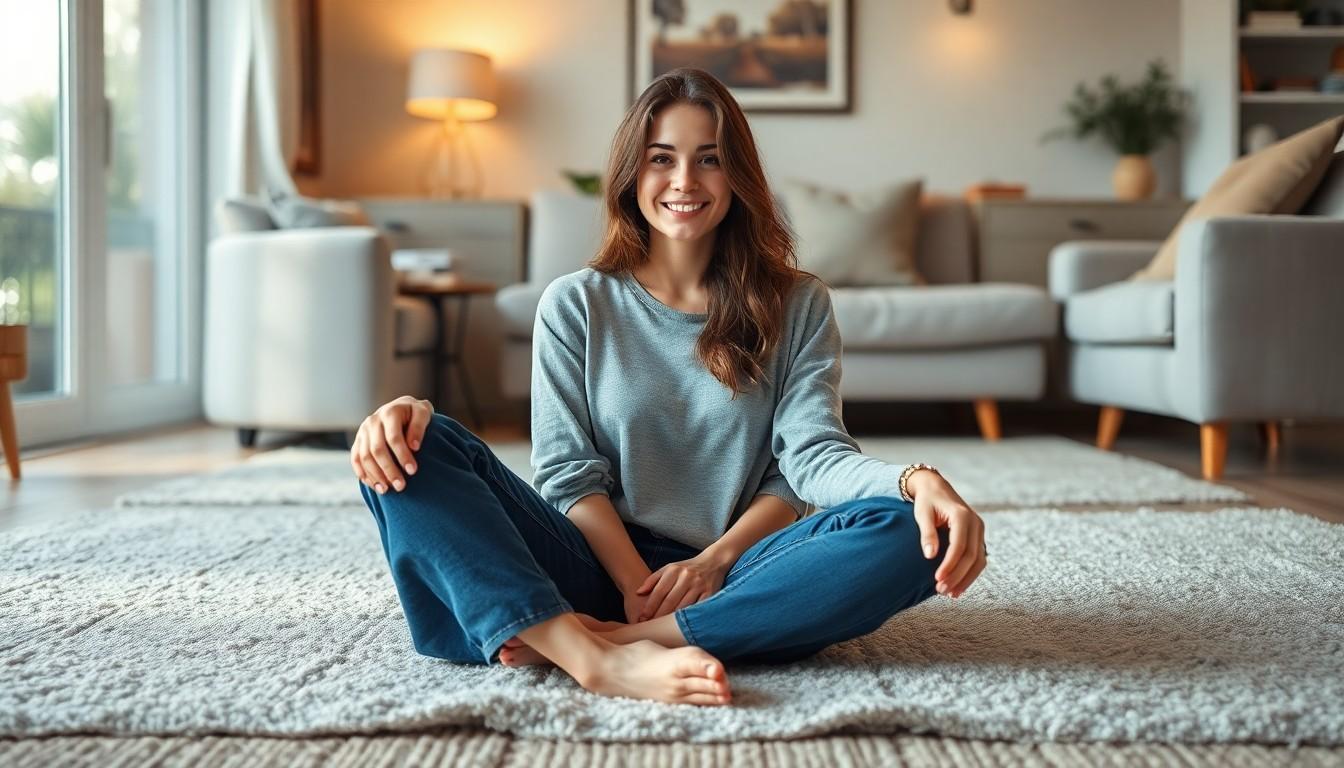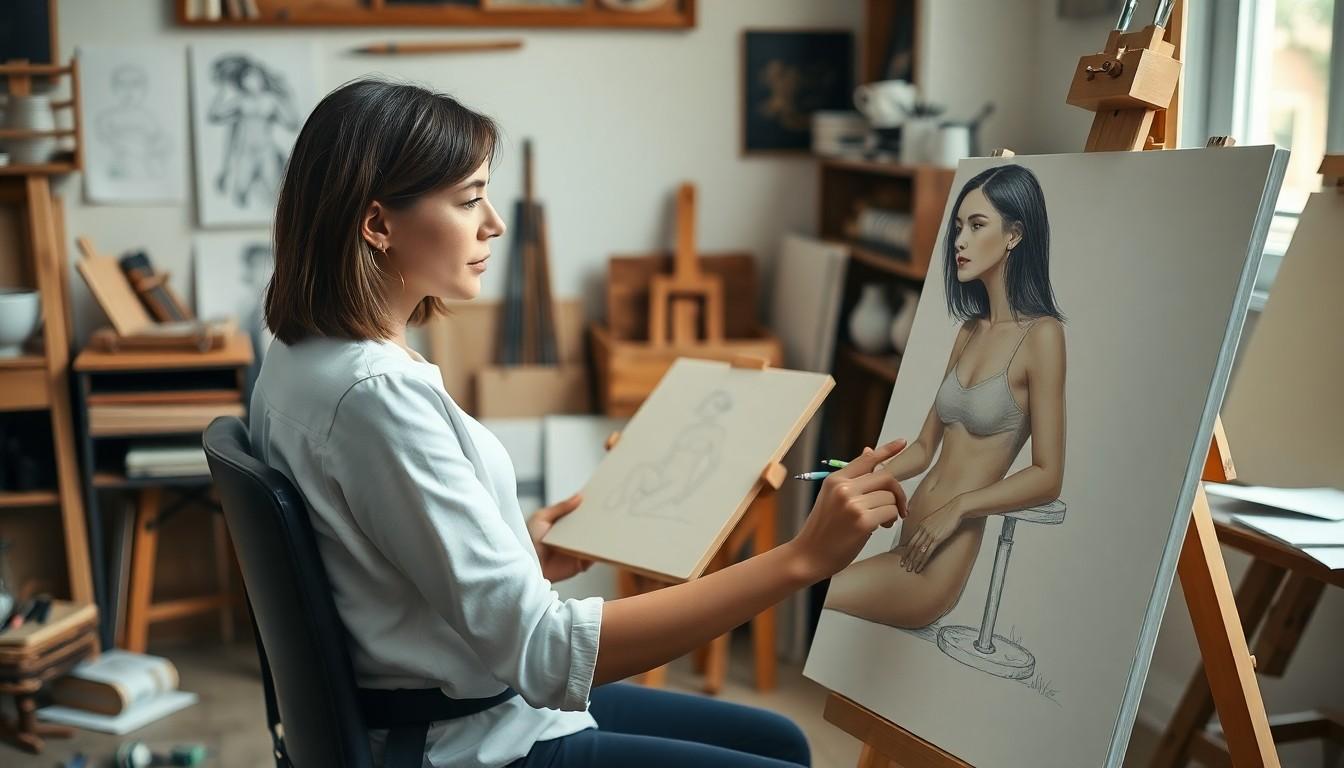In the world of art, capturing the perfect pose can feel like trying to catch a greased pig—slippery and elusive. For artists seeking female sitting drawing references, the challenge can be both daunting and delightful. Whether it’s for a stunning portrait or a whimsical character design, having the right reference can make all the difference between a masterpiece and a stick figure that looks like it just survived a tornado.
Female Sitting Drawing References
Capturing female figures in seated poses presents unique challenges for artists. Utilizing accurate references has a profound impact on artwork quality.
Importance in Art
Accurate references enhance artistic expression and realism. They provide essential visual information, allowing artists to understand body proportions and angles. Observing references helps convey emotion and narrative through body language. Artists gain perspective on how gravity affects the figure’s form, contributing to the authenticity of their work. Drawings lacking references can appear stiff or unnatural, diminishing their overall impact.
Benefits for Artists
References facilitate improved technique and skill development. Artists benefit from studying different poses, which broadens their understanding of human anatomy. Utilizing various references fosters creativity and encourages experimentation with composition. Accessing high-quality references saves time, enhancing the efficiency of the creative process. Artists often find that analyzed references lead to increased confidence in their abilities, as they apply learned techniques in original works.
Types of Female Sitting Poses

Capturing female figures in seated poses involves various styles that contribute to artistic expression. Two primary categories include natural poses and stylized poses.
Natural Poses
Natural poses express authenticity and realism. In these stances, the figure often reflects relaxed body language, such as casually leaning forward or resting on one arm. Artists can find inspiration in everyday settings, observing how individuals sit while engaging in conversation or reading. Standard examples include a woman sitting cross-legged on the floor or perched on a chair with her legs extended. These scenarios highlight the realistic portrayal of weight distribution and body tension. Ideal references enhance understanding of human anatomy, allowing artists to effectively convey emotion through posture and gestures.
Stylized Poses
Stylized poses emphasize artistic interpretation over realism. In these instances, the figure may demonstrate exaggerated features or dynamic angles for visual impact. A common approach involves incorporating unique proportions, resulting in high-energy or whimsical representations. Artists often utilize stylized poses for character design, where personality traits can be expressed through posture. Examples include a woman sitting with one leg tucked under while arching her back, showcasing a mix of grace and strength. These poses allow for creative exploration, challenging artists to develop distinctive styles and compositions.
Creating a Resource Library
Building a resource library for female sitting drawing references enhances an artist’s ability to create compelling and authentic artwork.
Sourcing Quality References
Artists often find themselves seeking high-quality references to inform their work. Online platforms like Pinterest or art-focused websites offer a vast collection of poses and scenarios. Many professional artists also share their references through social media, which can serve as inspiration. Additionally, stock photo sites provide accessible images for various seated poses, catering to specific needs. Utilizing multiple sources ensures a diverse range of references, allowing artists to explore different styles and techniques. It’s beneficial to choose references that reflect natural body language, as this can significantly impact the overall feel of the artwork.
Organizing References Effectively
Effective organization of references plays a crucial role in an artist’s workflow. Digital folders can categorize references by pose type, style, or anatomy focus. Tagging files with keywords simplifies the search process, making access quick and efficient. Creating a visual catalog using apps or software designed for artists aids in curating favorite images. For physical references, a dedicated binder or sketchbook serves as a tactile resource. Consistent organization not only saves time but also encourages exploration and experimentation, allowing artists to refine their skills and techniques more freely.
Techniques for Drawing from References
Effective drawing from references requires specific techniques. Artists can elevate their work through observation and accurate proportions.
Observation Skills
Observation skills play a vital role in capturing details. Prioritizing the study of light, shadow, and texture enhances visual accuracy. Noting gestures, angles, and body language contributes to a more dynamic representation. By using references, artists develop a keen eye for subtle variations in posture. They can practice sketching from multiple angles to gain a comprehensive understanding of the subject. Regularly analyzing references leads to greater awareness of human anatomy and movement.
Capturing Proportions
Capturing proportions accurately ensures realism in artwork. Starting with basic shapes provides a solid foundation for structure. Measuring the relative sizes of body parts helps maintain proper scale. Using a grid method or sighting techniques aids in comparing elements with one another. Transferring measurements from references to sketches creates a balanced composition. Adjusting poses based on proportions facilitates a more natural look. Artists should continually refine their approach, allowing for increased confidence in their representation of figures.
Mastering female sitting drawing references is essential for artists seeking to enhance their work. The right references not only improve technical skills but also foster creativity and confidence in artistic expression. By exploring both natural and stylized poses, artists can effectively convey emotion and narrative through their work.
Organizing a resource library of high-quality references streamlines the creative process, allowing for more experimentation and refinement of techniques. With diligent practice and observation, artists can develop a deeper understanding of human anatomy and movement. Ultimately, embracing these practices leads to more authentic and impactful artwork.

